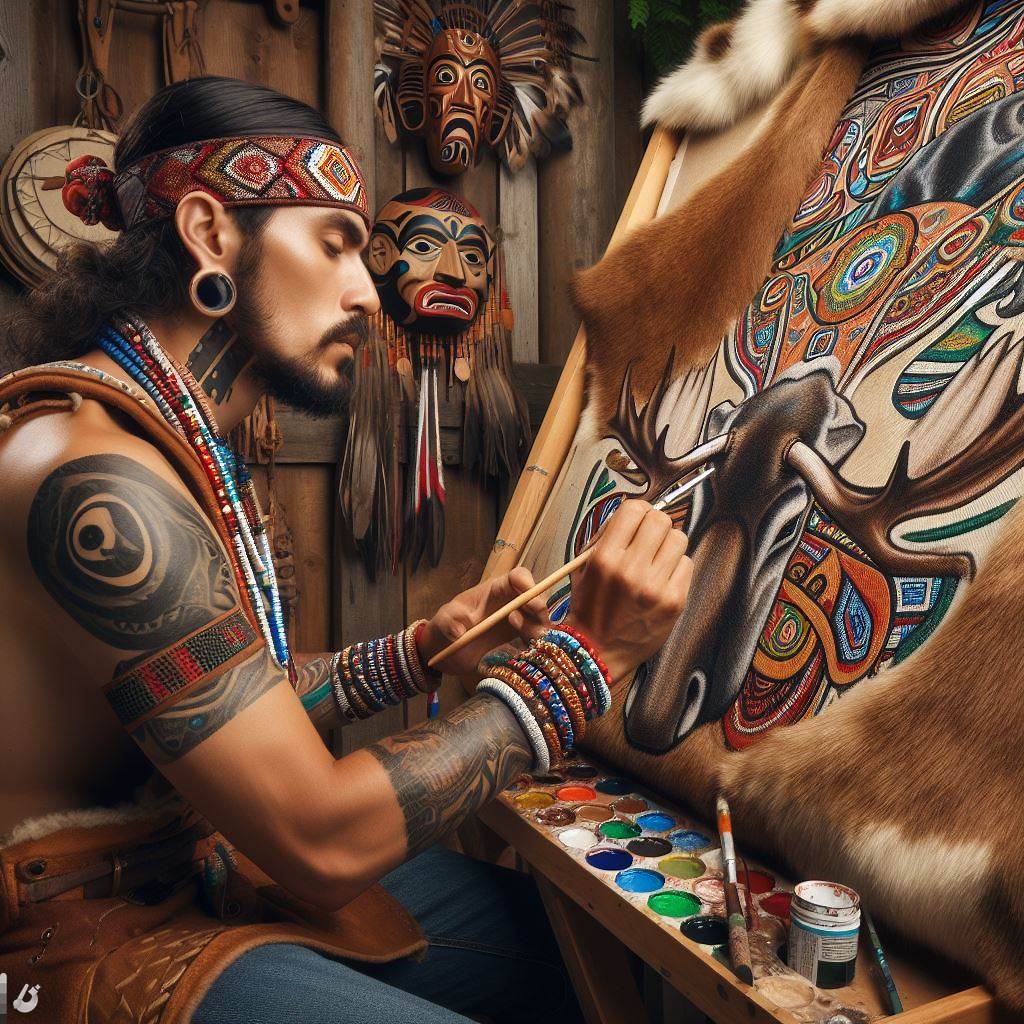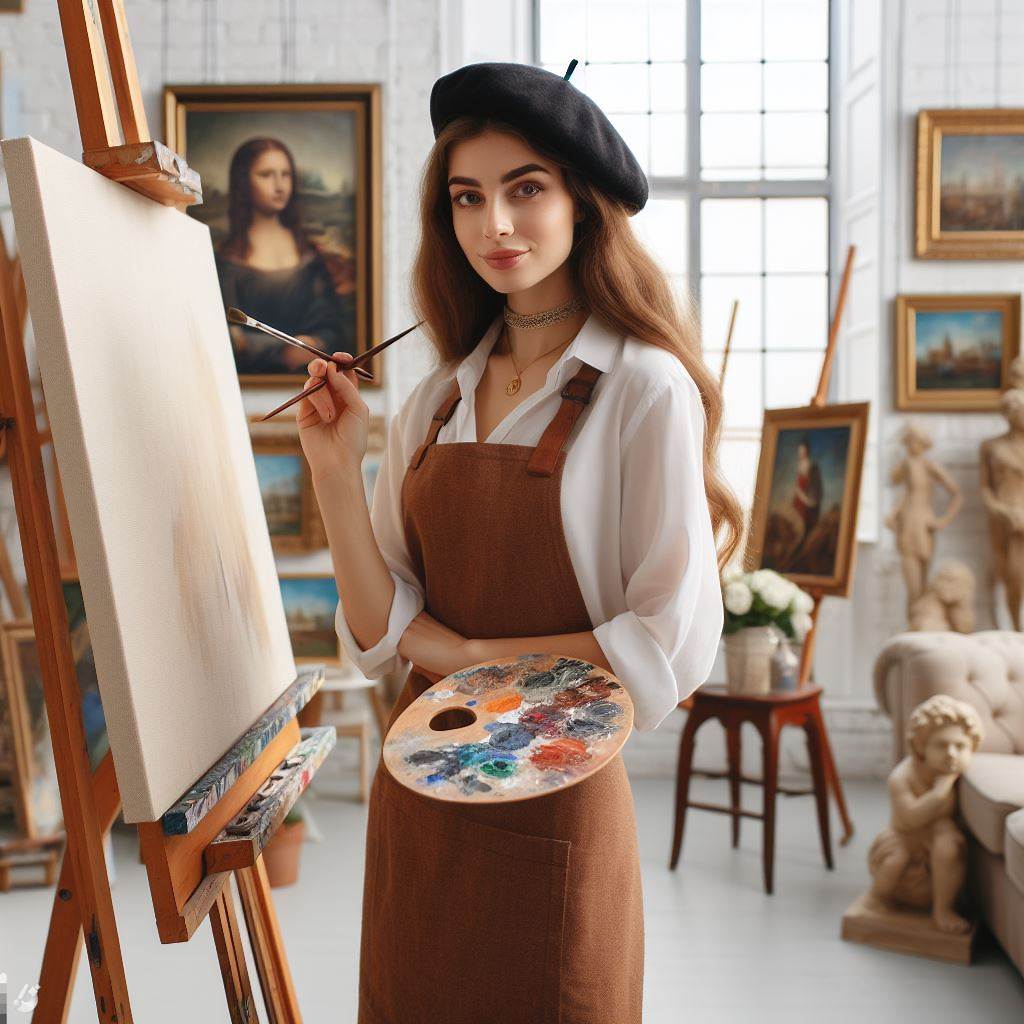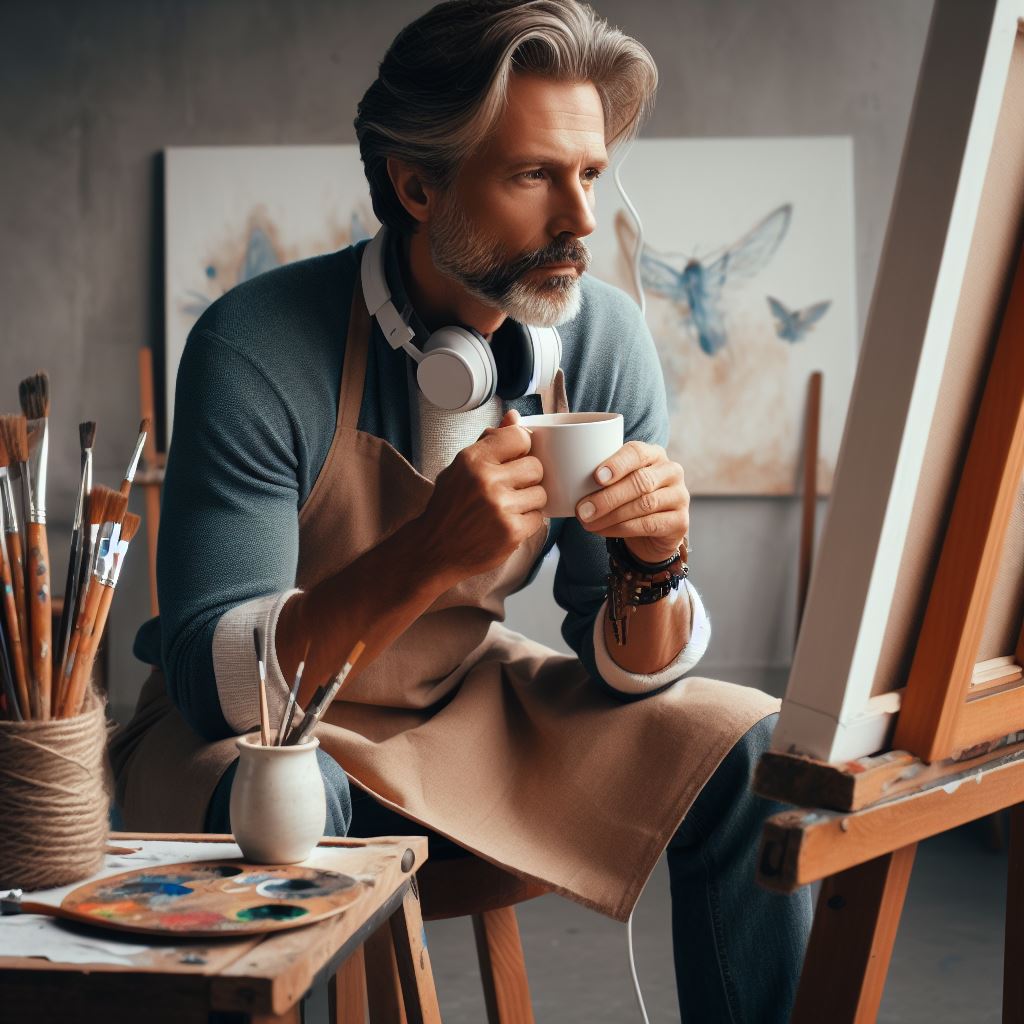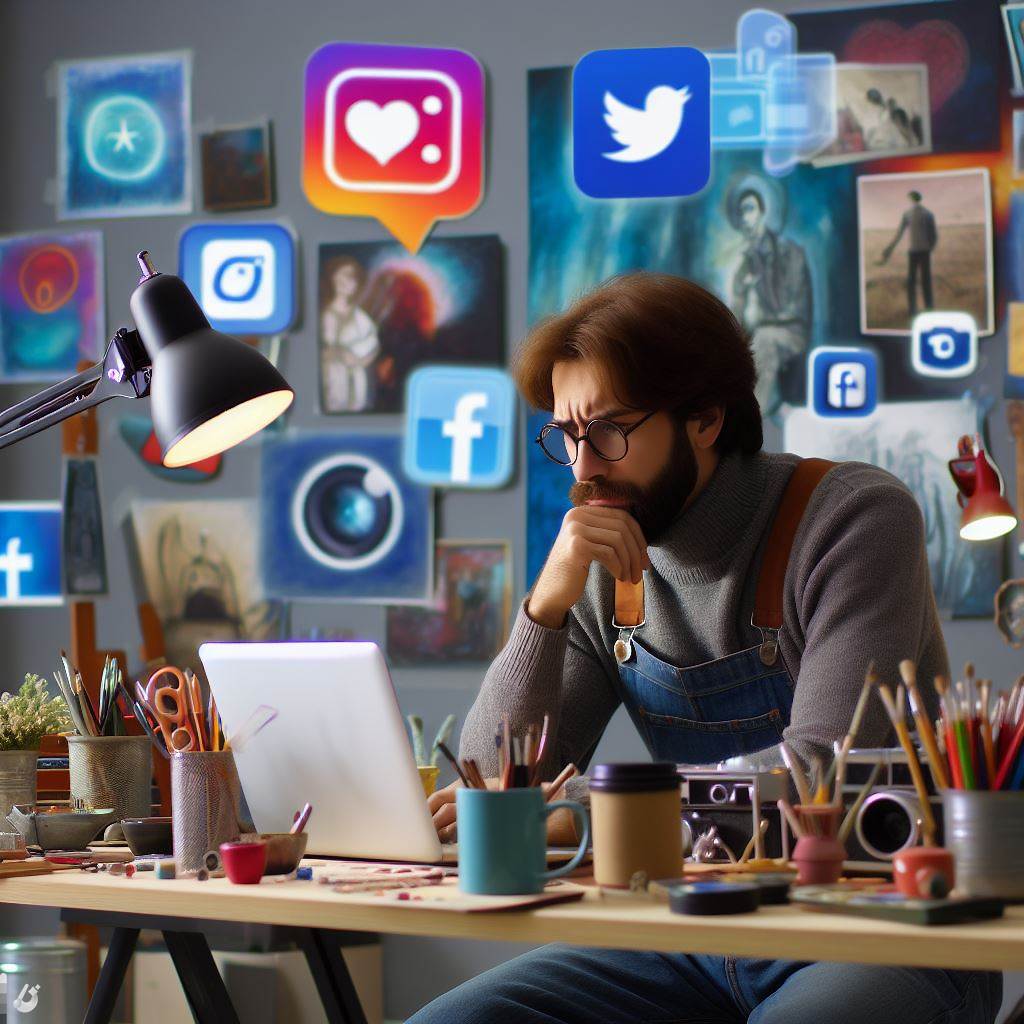Introduction
Indigenous art in Canada has a rich history dating back thousands of years.
Overview of the importance of Indigenous voices and visions in art
Indigenous art plays a crucial role in preserving cultural heritage and identity.
It serves as a medium for self-expression, storytelling, and community building.
Indigenous voices and visions offer unique perspectives on land, spirituality, and societal issues.
Their art reflects a deep connection to the natural world and a reverence for ancestral wisdom.
Through their art, Indigenous artists challenge stereotypes and navigate the complexities of their existence.
Their works provide a platform to reclaim narratives and challenge colonial narratives.
Furthermore, Indigenous art fosters intergenerational learning and strengthens cultural resilience.
The recognition and celebration of Indigenous voices and visions in art are essential for reconciliation.
It is an opportunity to bridge the gaps between Indigenous and non-Indigenous communities.
By engaging with Indigenous art, we can develop a deeper understanding and respect for their cultures.
Basically, indigenous art in Canada is a vibrant and powerful expression of identity, resistance, and resilience.
It serves as a catalyst for social change and a bridge between communities.
Recognizing and valuing Indigenous voices and visions in art are crucial steps towards reconciliation.
Unlock Your Career Potential
Visualize a clear path to success with our tailored Career Consulting service. Personalized insights in just 1-3 days.
Get StartedTraditional Indigenous Art Forms
Various traditional art forms
Dreamcatchers and their significance
Dreamcatchers are traditional Indigenous art forms that originated in Ojibwe culture.
They are made of a hoop, usually wooden, with a web inside, adorned with meaningful objects like feathers and beads.
It is believed that dreamcatchers catch and filter out bad dreams, allowing only good dreams to pass through, thus protecting the individual sleeping underneath.
Totem poles as storytelling mediums
Totem poles are carved, vertical sculptures found in various Indigenous cultures across Canada, including the Haida, Kwakwaka’wakw, and Tsimshian.
They are often the result of collaborations between multiple artists.
Totem poles serve as a storytelling medium, where each intricate carving represents different stories, ancestry, and important events from the tribe’s history.
Birch bark biting and quillwork
Birch bark biting and quillwork are art forms practiced primarily by Indigenous women.
This involves teasing intricate patterns and designs by biting or folding layers of birch bark, while quillwork involves using dyed porcupine quills to create colorful and decorative patterns on clothing, bags, and other items.
Both art forms have significant cultural and historical meaning.
Importance of preserving and promoting these art forms
The preservation and promotion of traditional Indigenous art forms are crucial for several reasons:
Cultural Preservation
Traditional art forms hold immense cultural significance for Indigenous communities.
They are tangible representations of their history, stories, and values, connecting them to their ancestors and traditional ways of life.
Preserving and promoting these art forms ensures the continuation of cultural knowledge and helps maintain a strong sense of identity within Indigenous communities.
Revitalization of Indigenous Languages
Many traditional art forms are intricately linked to Indigenous languages.
Land Your Dream Canadian Job with a Perfect Resume
Unlock opportunities by tailoring your resume for Canadian employers. ATS-optimized and aligned with industry standards, this service boosts your chances of getting noticed and hired.
Start NowThrough the creation of art, Indigenous languages are spoken, sung, and shared.
Preserving and promoting these art forms contribute to reviving and revitalizing Indigenous languages, which are at risk of being lost.
By encouraging the use of Indigenous languages in art, future generations are inspired to learn and embrace their heritage.
Economic Opportunities
Preserving and promoting traditional Indigenous art forms can also create economic opportunities for Indigenous artists and communities.
By selling their artwork, artists can earn a living and support their families.
Supporting and buying Indigenous artwork also allows for a fair exchange between the artist and the buyer, promoting cultural appreciation and sustainability.
Cultural Exchange and Appreciation
By sharing traditional Indigenous art forms with the wider population, cultural exchange and appreciation can occur.
These art forms provide a bridge for non-Indigenous individuals to learn about Indigenous cultures, their values, and their unique perspectives.
It fosters understanding, respect, and appreciation for the rich and diverse heritage of Indigenous peoples.
Healing and Reconciliation
Preserving and promoting traditional Indigenous art forms play a vital role in healing and reconciliation efforts.
Through art, Indigenous communities are able to express their stories, struggles, and resilience.
It serves as a tool for empowerment, allowing Indigenous peoples to reclaim their narrative, challenge stereotypes, and foster understanding and empathy among all Canadians.
Generally, the traditional Indigenous art forms such as dreamcatchers, totem poles, birch bark biting, and quillwork not only hold deep cultural significance but also foster cultural preservation, economic opportunities, and intercultural understanding.
It is our collective responsibility to value, respect, and support the preservation and promotion of these art forms as a vital part of Canada’s artistic and cultural heritage.
Elevate Your LinkedIn Profile for Canadian Success
Attract top Canadian recruiters by optimizing your LinkedIn profile. Boost your visibility with compelling keywords, a standout summary, and a professional presence that makes you unforgettable.
Get StartedRead: Emerging Art Trends in Canada for 2024-2024
Contemporary Indigenous Artists
Contemporary Indigenous art in Canada is a vibrant and dynamic expression of the rich cultural heritage and lived experiences of Indigenous peoples.
Through their works, Indigenous artists are reclaiming their voices, challenging stereotypes, and advocating for social and political change.
Norval Morrisseau and the Woodland style
One well-known Indigenous artist in Canada is Norval Morrisseau, often credited as the founder of the Woodland style.
Morrisseau, a member of the Ojibwe tribe, blended traditional Ojibwe art forms with modern techniques to convey spiritual and cultural themes.
His bold and vibrant paintings depicted mythological figures, wildlife, and ceremonies, reflecting the interconnectedness of Indigenous communities with nature and spirituality.
Rebecca Belmore’s performance art
Rebecca Belmore, another prominent Indigenous artist, explores the medium of performance art to address issues of colonization, Indigenous identity, and violence against Indigenous women.
Belmore’s performances often involve her body as a means of conveying powerful messages.
Through her art, she amplifies the voices of marginalized Indigenous individuals while provoking dialogue and challenging existing power structures.
Kent Monkman’s unconventional reinterpretations
Kent Monkman is a contemporary artist of Cree ancestry known for his unconventional reinterpretations of historical Western art.
Monkman’s works combine elements of both satire and homage, using his alter-ego, Miss Chief Eagle Testickle, to subvert and recontextualize colonial narratives.
By reclaiming Indigenous identity and reimagining historical events, Monkman disrupts dominant narratives and invites viewers to question the erasure of Indigenous perspectives from mainstream art history.
How these artists embody Indigenous voices and visions
These Indigenous artists embody Indigenous voices and visions by reclaiming their cultural heritage, challenging stereotypes, and advocating for social and political change.
Through their art, they offer a powerful platform for Indigenous communities to share their stories, experiences, and struggles, while also celebrating their resilience and cultural strength.
Norval Morrisseau
By incorporating traditional Indigenous art forms with contemporary techniques and mediums, artists like Norval Morrisseau respond to the ongoing erasure of Indigenous voices and reclaim their space within the Canadian artistic landscape.
Their vibrant and symbolic artworks capture the essence of Indigenous cosmology, spirituality, and history, reminding viewers of the enduring presence and resilience of Indigenous communities.
Rebecca Belmore
Meanwhile, Rebecca Belmore’s performances confront the deep-rooted effects of colonization on Indigenous peoples and specifically address the violence faced by Indigenous women.
Her use of the body as a powerful tool challenges viewers to confront uncomfortable truths and actively participate in the process of reconciliation.
Kent Monkman
Kent Monkman’s unconventional reinterpretations expose the biases and distortions within Western art history and reclaim Indigenous agency within these narratives.
Through his alter-ego, Miss Chief Eagle Testickle, he challenges the notion of the “noble savage” and instead presents an empowered and confident Indigenous figure, demanding recognition and representation.
Essentially, the work of Norval Morrisseau, Rebecca Belmore, and Kent Monkman represents a diverse range of artistic expressions within the contemporary Indigenous art scene in Canada.
These artists courageously embody Indigenous voices and visions, challenging stereotypes, reclaiming cultural heritage, and advocating for social justice.
Their artworks serve as a form of resistance, reconciliation, and celebration, inviting viewers to engage with Indigenous perspectives and narratives.
Read: Balancing Art and Business: Tips for Canadian Artists

Indigenous Art Galleries and Museums in Canada
Key galleries and museums
- National Gallery of Canada’s Indigenous collection: Showcasing a diverse range of Indigenous artworks, this gallery promotes Indigenous culture and traditions.
- Art Gallery of Ontario’s Indigenous collection and programming: With an extensive collection and educational programs, this gallery celebrates Indigenous artists and their contributions.
- The Indian Group of Seven Art Movement: A significant art movement in Canada, this group challenged stereotypes and influenced the Indigenous art scene.
Indigenous art galleries and museums play a crucial role in preserving Indigenous art for future generations.
These institutions are instrumental in safeguarding the cultural heritage and narratives of Indigenous communities.
By featuring Indigenous artworks and organizing exhibitions and educational programs, these galleries and museums provide a platform for Indigenous artists to express their voices and visions.
The National Gallery of Canada
The National Gallery of Canada’s Indigenous collection stands as a testament to the rich artistic traditions and diverse artistic practices of Indigenous communities across the country.
Through its collections, exhibitions, and interactive tours, the gallery not only presents Indigenous art but also creates an inclusive space for dialogue and understanding.
The Art Gallery of Ontario
The Art Gallery of Ontario’s Indigenous collection and programming contribute significantly to the recognition and appreciation of Indigenous art.
The gallery’s commitment to showcasing Indigenous artwork, both historical and contemporary, raises awareness about the artistic contributions of Indigenous artists.
Through programs like workshops, artist talks, and community engagement initiatives, the gallery facilitates cultural exchange and supports Indigenous artists in sharing their stories and experiences.
The Indian Group of Seven Art Movement
The Indian Group of Seven Art Movement, consisting of seven Indigenous artists, made a profound impact on the Canadian art scene.
By merging traditional Indigenous aesthetics with contemporary art practices, they challenged prevailing stereotypes and redefined Indigenous representation in the art world.
Their works, exhibited in various galleries and museums, continue to inspire and influence both Indigenous and non-Indigenous artists.
Significance of these institutions in preserving Indigenous art
These institutions are not mere display spaces but active agents in the preservation and revitalization of Indigenous art.
They work closely with Indigenous communities, artists, and elders to ensure the respectful representation and interpretation of Indigenous artworks.
The galleries and museums play a vital role in preserving traditional artistic techniques and indigenous knowledge systems.
Moreover, these institutions serve as important educational resources for both Indigenous and non-Indigenous audiences.
They offer valuable insights into the historical, social, and cultural contexts of Indigenous art.
Through workshops, lectures, and school programs, they promote cross-cultural understanding and appreciation of Indigenous cultures.
In general, Indigenous art galleries and museums in Canada play a significant role in preserving, promoting, and celebrating Indigenous art.
They actively engage in presenting diverse Indigenous artworks, supporting artists, and fostering cultural exchange.
By recognizing the importance of these institutions, we can appreciate and value the rich artistic heritage of Indigenous communities.
Read: Art Therapy: A Growing Trend in Canadian Wellness
Challenges Faced by Indigenous Artists
Addressing cultural appropriation issues
Indigenous artists must navigate the complex issue of cultural appropriation, where their designs and symbols are misused or copied without permission.
Cultural appropriation disregards the significance and sacredness of Indigenous art, perpetuating harmful stereotypes and disrespecting Indigenous cultures.
Culturally inappropriate use of Indigenous art erases the history and traditions associated with it, undermining the artists’ cultural heritage.
Artists face the challenge of raising awareness about these appropriation issues and educating the public on respectful engagement with Indigenous art.
Lack of representation and recognition
Indigenous artists often struggle with the lack of representation and recognition within the mainstream art industry.
Their artwork is frequently overlooked or undervalued, resulting in limited opportunities for exposure and economic success.
The underrepresentation of Indigenous artists perpetuates a cycle of marginalization, hindering the growth and development of their artistic careers.
Efforts should be made to rectify this disparity by increasing representation, providing platforms, and promoting Indigenous artists’ work.
Ongoing struggles for control and ownership over Indigenous art
Indigenous artists face ongoing battles for control and ownership over their art, as non-Indigenous individuals and institutions seek to profit from it.
The commercialization and commodification of Indigenous art often result in the exploitation and appropriation of cultural symbols.
Legal protections for Indigenous artists’ intellectual property rights are insufficient, making it challenging to prevent unauthorized use or reproduction of their work.
Indigenous artists must assert their rights and advocate for stronger legal frameworks to protect their cultural heritage and maintain artistic control.
In essence, Indigenous artists in Canada face various challenges that hinder their artistic and cultural development.
They must confront issues of cultural appropriation, tackling the misrepresentation and misuse of their art.
The lack of recognition and representation within the mainstream art industry further marginalizes their work.
Additionally, ongoing struggles for control and ownership over Indigenous art undermine artists’ rights and cultural heritage.
Resolving these challenges requires collective efforts to raise awareness, increase representation, and strengthen legal protections for Indigenous artists.
It is crucial to support and celebrate Indigenous art to ensure its preservation, growth, and flourishing in Canada’s artistic landscape.
Read: The Role of Art Collectives in Canada’s Art Scene
Indigenous Art as a Tool for Reconciliation
Examining the role of art in Indigenous-settler relations
Indigenous art plays a crucial role in fostering understanding and reconciliation between Indigenous communities and settlers in Canada.
Through its unique expressive power, Indigenous art serves as a tool for bridging cultural gaps and initiating dialogue.
Indigenous art serves as a powerful vehicle for sharing cultural heritage, stories, and experiences, allowing Indigenous communities to assert their presence and challenge dominant narratives.
By reclaiming their cultural identity and asserting their rights, Indigenous artists demonstrate the resilience and strength of their communities.
Additionally, Indigenous art promotes intercultural understanding by inviting settlers to engage with Indigenous perspectives and narratives.
Through visual representations, Indigenous artists are able to communicate their connection to the land, spirituality, and the interconnectedness of all living beings.
Examples of collaborative art projects promoting understanding and healing
One notable example of collaborative art projects is the “Witness Blanket,” a large-scale art installation created by artist Carey Newman.
The installation incorporates hundreds of items, including artifacts and materials collected from residential schools, symbolizing the stories and experiences of Indigenous peoples.
By involving survivors, their families, and communities in the creation of the artwork, the “Witness Blanket” promotes healing and empowers Indigenous voices.
Another powerful example is the “Reclaiming Shingwauk Hall” project, where Indigenous artists collaborate to transform a former residential school building into a site of healing and reconciliation.
Through murals, sculptures, and other forms of art, the project contributes to reclaiming space, commemorating survivors, and educating the public about the dark history of the residential school system.
The potential impact of Indigenous art on reconciliation efforts
Indigenous art has the potential to significantly contribute to reconciliation efforts in Canada.
By actively engaging with Indigenous art, settlers can confront the colonial legacy and work towards a more equitable and inclusive society.
Through these local art, settlers are exposed to diverse perspectives, enabling them to challenge stereotypes and prejudices deeply rooted in society.
Understanding and appreciating this art helps settlers empathize, dismantle systemic barriers, and foster intercultural understanding.
Furthermore, this art can create spaces for dialogue and collaboration between local and non-Indigenous communities.
By providing platforms for shared experiences and collective storytelling, art promotes healing and generates opportunities for meaningful connections and relationships.
In a nutshell, this art serves as a transformative tool for reconciliation efforts in Canada.
Empower Indigenous voices, confront colonial narratives, and foster cultural understanding through art, driving healing, empathy, and building an inclusive society.
Through continued support and recognition, Indigenous art can contribute to lasting reconciliation between Indigenous communities and settlers.
Conclusion
Indigenous voices and visions have played a crucial role in Canadian art.
They have enriched the country’s cultural landscape with their diverse and meaningful expressions.
It is essential to appreciate and explore Indigenous art further.
Supporting and celebrating Indigenous artists is crucial to the growth and development of Canada’s art scene.
Ultimately, the significance of Indigenous art in Canada cannot be overstated.
It is a testament to the country’s rich cultural heritage and diversity.
As Canadians, we must continue to support and celebrate Indigenous art and artists.
Creating a vibrant art scene reflects our unique identity. Let’s appreciate Indigenous artists and explore the significance of their art.




